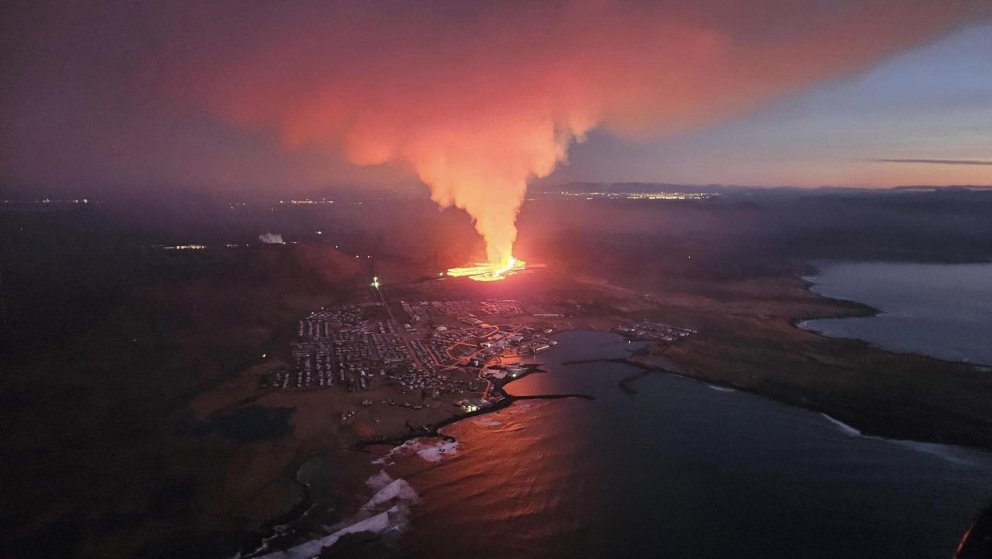Travel and tourism in Iceland not affected by new Grindavík eruption
A volcanic eruption started on Sunday, January 14, near Grindavík on the Reykjanes Peninsula. The town had previously been evacuated, and people were not in danger.
Key Takeaways:
- There is a volcanic eruption near the town of Grindavík on the Reykjanes Peninsula.
- The eruption's effects are confined to the town and the immediate area surrounding the eruption site. All services in Iceland are operating normally.
- Flights to and from Iceland are operating on schedule, and disruption to air traffic is considered highly unlikely.
- Travel and tourism is not affected in the country, except for the area closest to the eruption.
- International flights to Akureyri airport, as well as domestic flights, are on schedule. The eruption is 500 kilometers away from Akureyri international airport.
- Authorities request people stay away from the area and do not attempt to walk to the eruption site. All roads to the area are closed.
Since October 24, 2023, scientists at the Icelandic Meteorological Office have been carefully monitoring increased seismic activity on the Reykjanes Peninsula, which is considered a possible precursor to a volcanic eruption in the area. This development resulted in a short eruption that lasted from December 18-21, 2023, near the town of Grindavík. Volcanic activity returned on Sunday, January 14, when two new fissures eruptions started in area. All residents had previously been evacuated from the town.
Preliminary reports suggest that the lava flows are less voluminous than the December 2023 eruption. This is a highly localized event, and the effects of the eruption are contained in the immediate area surrounding the eruption site. Iceland generally remains unaffected, and daily life outside of Grindavík proceeds as normal.
While the possibility of air traffic disturbance cannot be entirely ruled out, scientists consider it an improbable scenario. Typically, the impact of volcanic eruptions is confined to a specific, localized area near the eruption. Notably, previous eruptions in the area did not impact flights to and from the country.
The area has been evacuated and is closed. Authorities request that people do not attempt to walk to the eruption site. Many crevasses have formed in the area, along with unseen hazards and search and rescue teams are occupied.
The Icelandic Meteorological Office, The National Police Commissioner, The Department of Civil Protection and Emergency Management, and a team of scientists from the University of Iceland are closely monitoring this situation and are constantly analyzing developments based on the best scientific data available.
Iceland is situated on the Mid-Atlantic Ridge, where the North American and Eurasian tectonic plates diverge, making it one of the most active volcanic regions in the world. Regular seismic events, ranging from minor tremors to significant earthquakes, are a characteristic feature of Iceland's geology. Seismic activity in Iceland is often due to magma movement beneath the earth's crust and tectonic plate movements. These geological actions sometimes result in magma seeking the easiest path to the surface and thereby becoming a volcanic eruption.
Iceland is no stranger to volcanic activity. Four eruptions have occurred on the Reykjanes Peninsula in the last three years. Icelandic authorities and the public are highly prepared for such events, and Iceland has some of the world's most effective volcanic preparedness measures. Iceland's geoscientists possess vast experience in dealing with volcanic activities.
More information:
- The Icelandic MET office: Latest information on seismic activity and development of events
- Safetravel: Current updates on safety
- The Icelandic National Broadcasting Service: News coverage
- Visit Reykjanes: Updates from the region

